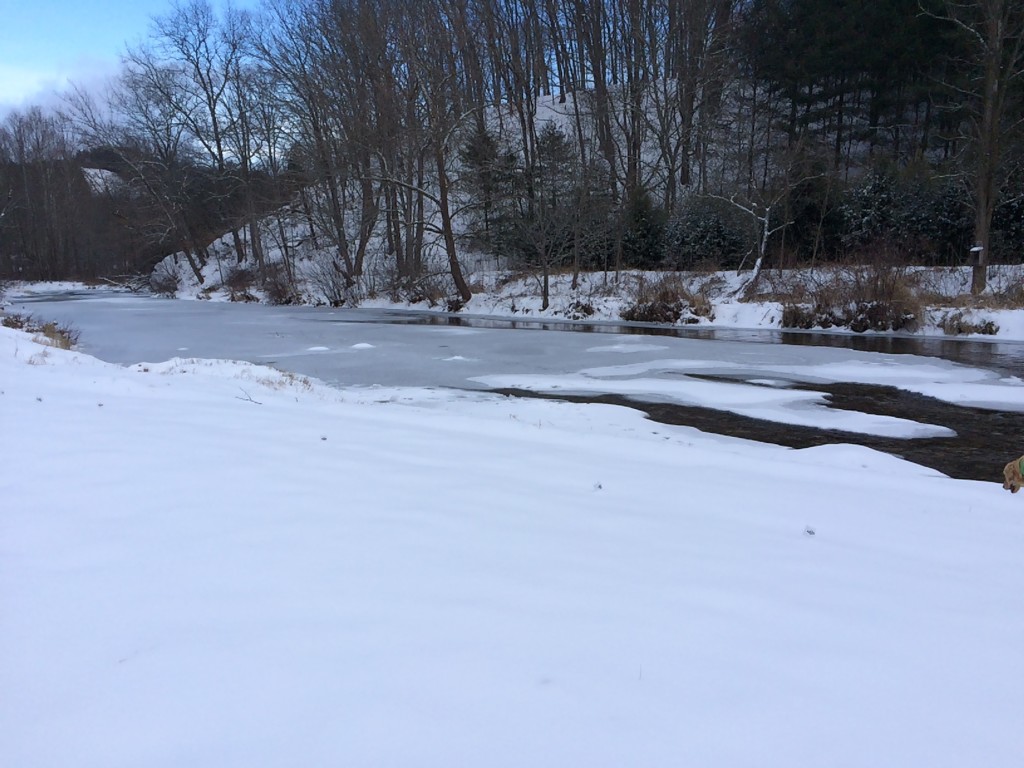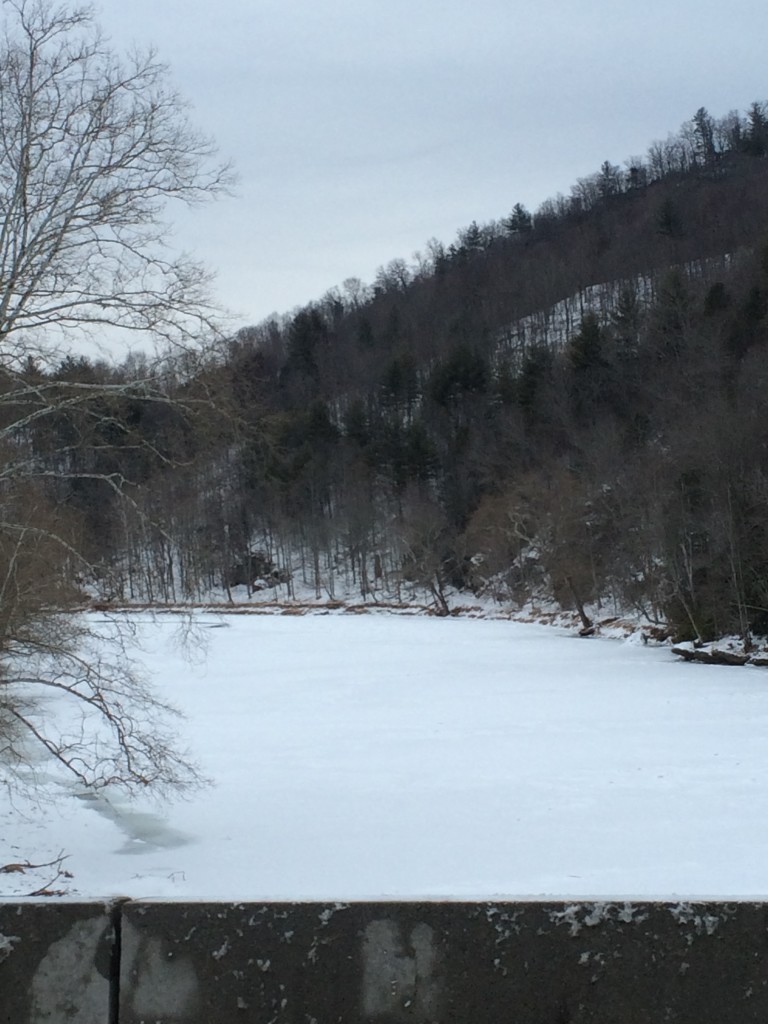





One thing that I did in making this move was to decide that the best time for this would be the dead of winter. A little irony here, but there is such a raw and striking beauty in a mountain winter. To me, there is nothing so beautiful as falling snow and a thick blanket of snow on the ground. The mountains and their open areas and ridges are snow covered and look as if they are completely untouched from a distance–bright and brilliantly white between the trees. Trees bare of leaves allow the contours of the hills, mountains and their ridges to be seen. These are completely hidden from view in the summer.
When I was a child, there were very cold days like these today and homes had much less insulation than they do now. When a cold snap would come my parents or grandparents would always leave water running in one of the faucets in the house to keep the water from freezing in the pipes. It was during these winters growing up that I heard often repeated that “running water doesn’t freeze”.
But I guess it depends on where that running water is, because as you can see in these pictures–clearly running water can and does freeze. It doesn’t happen overnight, but as cold spells linger in these mountains, the water flowing in creeks and rivers does indeed freeze over.
There have been many times that I have seen the New River frozen solid with thick chunks of rugged white ice visible on the surface. And where the river flows more smoothly, the ice would be smooth–smooth enough indeed to ice skate on. I can only say I have done that twice, but I have done it.
The frozen world of ice and snow most often we experience as one of quiet and stillness. But that ice on creeks and rivers is far from silent. Great booms and bangs are heard, much like a gun shot as the ice creaks and cracks beneath the surface as the underside changes and moves–while the surface remains unchanged. It is unnerving to say the least to be standing on that ice and hear the sounds and know that the river continues to flow underneath the surface that appears so solid and firm.
Since making the move we have relearned the essentials in living in the winter in the mountains–always have a secondary or back up heat source, always have candles and lights that don’t rely on electricity. And have a secondary method for cooking available. Because–there will be days without power in the coldest of ice or snow storms. There will be those times you sleep in the floor in front of the gas stove with blankets and your dog–and such are the times you treasure when they have passed. Oh, and you leave a little water running in the faucet so the pipes don’t freeze…
